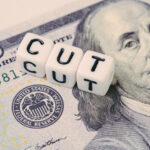Having Patience During Market Volatility

We know that some of you may be feeling FOMO (Fear of Missing Out) towards the market at this time, so we would like to provide additional commentary on what we are seeing in the market and the economy as a whole.
One of the ways in which to track the stock market’s value is by comparing the market’s level to its earnings-per-share, or EPS. The notion is that, the larger the ratio of market level to EPS, the larger the overvaluation is of the market’s value. However, the key to this valuation formula is currently in a serious flux: earnings. Due to the volatile and unpredictable nature of this global crisis, we will look at two scenarios with which to project the earnings. The first scenario is the best-case scenario that involves the economy beginning to reopen by late summer and fully reopening by fall. In this scenario, projected EPS around $140 would imply that the market is close to fair value at this point. In the second scenario, we would assume that, with no immediate vaccine in sight and a potential second wave of infections, the economic shutdown will be prolonged. In this instance, a more pessimistic EPS projection around $120 would imply that the market has an additional 20%+ to decline. With the way the situation is continuing to unfold, it is difficult to know exactly which path our economy will take at this point.
Another line of thinking may be, “well, if I can’t know for certain what the economic fallout will be, it’s best for me to just jump in now and see what happens.” While buying and holding for the long run can be an effective strategy, history shows us that avoiding volatile times (including volatility to the upside) can be even more effective. We decided to look at two time periods (1980-Present and 2000-Present) to see how an investor would perform if they missed the 20 best and 20 worst days in each of those periods. As a refresher, we mentioned in a previous article that the majority of the largest down and up days in market history were during recessions, and this is due to their volatile nature. If you bought and held the S&P 500 from 1980 until yesterday (April 6), you would have been up roughly 2,370%. However, if you had missed the 20 best and 20 worst days during the same timeframe, you would have been up nearly 3,390%. Likewise, an investor who bought and held from 2000 until yesterday would be up a little over 81%. In contrast, an investor who missed the 20 best and 20 worst days since 2000 would be up nearly 104%. In short, missing volatile time periods tends to outperform buying and holding through these times.
While we can’t know for certain what pattern this downturn will follow, we do have our two guiding principles: history and math. As we have mentioned before, history tells us that it is a regular occurrence during recessions to have head fakes to the upside; January 2009 saw the market up over 24% off the bottom before later setting a new low. Also, the head fakes during the 1987 crash, Dot-Com Bubble, and Great Recession took an average of 89 days, meaning that it took an average of nearly three months before setting new lows. For perspective, our most recent potential head fake began on March 25th, meaning we are only 13 days into this uptick. Regarding the math, our recession indicators did not fall for the head fakes during the previous two corrections; when they reversed up, it was because thepositive trend in the market confirmed itself. Even with Monday’s strong performance, our indicators remain negative, meaning that we continue to suggest remaining on the sidelines at this time.
One reason FOMO may feel more intense this time may be due to the size of these up and down days. In the Dot-Com Bubble, there were three days where the market was up 5%+ and one day where the market fell more than -5%. In the Great Recession, there were seven days where the market was up 5%+ and 12 days where the market was down more than -5%. As of yesterday, there have already been five days where the market has risen more than 5% and four days where the market has fallen more than -5%. In a little over a month, we have surpassed the Dot-Com Bubble and are well on our way towards surpassing the Great Recession in terms of these large, single-day moves. A significant reason for these large moves is the algorithmic trading done by institutional traders today, as these formulas can trigger mass selling or buying once the market reaches whatever criteria are required by the algorithm; the sheer size of these up and down days may be why investors feel abnormally antsy about missing out on the upturn.
The history and the math tell us to not only remain vigilant with our analyses, but to also remain patient. Most projections show that we have yet to even hit the peak of the coronavirus’ impact, and the true economic ramifications on companies and industries are yet to be seen. It can be difficult as an investor on the sideline to see days where the market is up multiple percent, but that this is a regular occurrence in bear markets. We will continue to monitor things daily, and we will let you know of any material changes we see in our indicators. In the meantime, we advise that you remain vigilant, stay safe, and pace yourself: economic downturns are a marathon, not a sprint. The S&P 500’s most recent low was 15 days ago, and these trends can take months to confirm or reverse. In short, there is a reason that patience is a virtue.
Thank you,
Bud Verfaillie and Ashley Rosser
 Bud Verfallie, CEO
Bud Verfallie, CEO
Bud holds several professional designations including: AIFA (Accredited Investment Fiduciary Analyst/Center for Fiduciary Studies), PPC (Professional Plan Consultant/Financial Service Standards), and CFP (Certified Financial Planner/College of Financial Planning), ranking him in the top 1% of all Investment Consultants nationally.
Bud has been an instructor/trainer for over 25 years. Subjects include: “How to Initiate a Successful Asset Management Business in Your Accounting Firm”, “Converting Your Commissioned-Based Investment Practice to Fee-Based”, “How to Establish an Asset Management Practice”, and “Investments and Financial Planning.” Bud has taught financial planners CFP Preparatory classes for the NIF.
Prior to her career in the financial services industry, Ashley earned her Bachelor of Science in Nursing from Cedarville University.
Ashley decided to make a career change from her ten years within the healthcare industry as a pediatric emergency room nurse to retirement and 401K investment planning. She joined Victory Wealth Partners in 2008 after obtaining her Series 65 professional financial license and went on to earn her AIF (Accredited Investment Fiduciary) professional designation from the Center for Fiduciary Studies.
The opinions voiced on this website are for general information only and are not intended to provide specific advice or recommendations for any individual. All performance referenced is historical and is no guarantee of future results. All indices are unmanaged and not be invested into directly. The Standard & Poor’s 500 Index is a capitalization-weighted index of 500 stocks designed to measure performance of the broad domestic economy through changes in the aggregate market value of 500 stocks representing all major industries.













